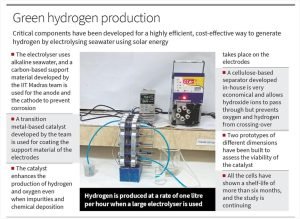Railway Safety
Why in news?
Recent accident in Odisha resurfaced the issue of status of railway safety in India
Status
- Indian Railways is the 4th largest railway network of the word (US, China, Russia)
- A total of more than 67000 km of railway network present. Around 55000 km built by British.
- More than 22 million passengers commute daily.
Issues
Finance
- CAG audit 2022 found that while the Gross Budgetary Support of Rs 15,000 crore had been contributed, the Railways’ internal resources fell short of the target for funding the remaining Rs 5,000 crore per year to RRSK.
- The report highlighted a decline in the allotment of funds for track renewal works, from Rs 9,607 crore in 2018-19 to Rs 7,417 crore in 2019-20.
- Operating ratio of railways is deteriorating. 107% in 2021-22.
- Cross subsidisation
Infrastructure
- The CAG report reveals that nearly 75% of the consequential train accidents between 2017-18 and 2020-21 were caused by derailments.
- Track congestion
- Lack of modernisation
- Kavach initiative, which aims to enhance railway safety in India has not been installed on all the routes. Of the total route length of 1.03 lakh kilometres, only 1,455 kilometres have been brought under Kavach yet.
Systemic issues
- Shortage of human resource
- Politicisation
Steps taken for Railway Safety
- Mission Zero Accident was one of the Missions announced in the Railway Budget 2016-17. It comprises the following two sub-missions.
-
- Elimination of Unmanned Level Crossings (UMLC) by 2019
- Developing Train Collision Avoidance System (TCAS)
- In the Budget 2017-18, an exclusive fund called “Rashtriya Rail Sanraksha Kosh” (RRSK) was created with a corpus of ₹1 lakh crore over a period of 5 years for giving a major boost to safety related works.
- Linke Hofmann Busch Coaches vs Integral Coach Factory Coaches
- Removal of unmanned crossings.

Commission on Railway Safety
- It deals with matters related to safety of rail travel and operations, among some other statutory functions – inspectorial, investigatory, and advisory – as laid down in the Railways Act, 1989.
- It is under the administrative control of the Ministry of Civil Aviation (MoCA) instead of the Ministry of Railways.
Interlocking system in Railways
- Interlocking System refers to a crucial safety mechanism used to control train movements and ensure safe operations at railway stations and junctions.
- As of 2022, 2,888 stations in India were equipped with an electronic interlocking system — comprising 45.5% of the Indian Railways network
Green Hydrogen
Why in News?
Government recently launched National Green Hydrogen Mission.
About
Hydrogen emits only water when burned but creating it can be carbon intensive. Depending on production methods, hydrogen can be grey, blue or green – and sometimes even pink, yellow or turquoise.
- Green hydrogen is defined as hydrogen produced by splitting water into hydrogen and oxygen using renewable electricity. This is a very different pathway compared to both grey and blue.
- Grey hydrogen is traditionally produced from methane (CH4), split with steam into CO2 – the main culprit for climate change – and H2, hydrogen. Grey hydrogen has increasingly been produced also from coal, with significantly higher CO2 emissions per unit of hydrogen produced, so much that is often called brown or black hydrogen instead of grey.
- Blue hydrogen follows the same process as grey, with the additional technologies necessary to capture the CO2 produced when hydrogen is split from methane (or from coal) and store it for long term. It is not one colour but rather a very broad gradation, as not 100% of the CO2 produced can be captured, and not all means of storing it are equally effective in the long term.

National Green Hydrogen Mission

- It is a program to incentivise the commercial production of green hydrogen and make India a net exporter of the fuel.
- The Mission will facilitate demand creation, production, utilization and export of Green Hydrogen.
- Goal is to develop green hydrogen production capacity of at least 5 MMT (Million Metric Tonne) per annum, alongside adding renewable energy capacity of about 125 GW (gigawatt) in India by 2030.
- It will also lead to a cumulative reduction in fossil fuel imports by over Rs 1 lakh crore and an abatement of nearly 50 MT of annual greenhouse gas emissions.
- Ministry of New and Renewable Energy.
There are two sub-schemes
- Strategic Interventions for Green Hydrogen Transition Programme (SIGHT): It will fund the domestic manufacturing of electrolysers and produce green hydrogen.
- Green Hydrogen Hubs: States and regions capable of supporting large scale production and/or utilization of hydrogen will be identified and developed as Green Hydrogen Hubs.
Recently, Researchers from IIT-Madras have developed Alkaline Seawater Electrolyzer to Generate Hydrogen, addressing the challenges related with the existing Water Electrolyzer Technology.

